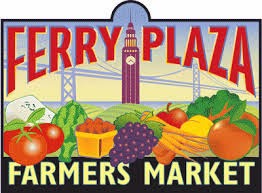 |
| Tales from the Bay |
"The old man still had two drinks of water in the bottle and he used half of one after he had eaten the shrimps. The skiff was sailing well considering the handicaps and he steered with the tiller under his arm. He could see the fish and he had only to look at his hands and feel his back against the stern to know that this had truly happened and was not a dream."
– Hemingway, Old Man and the Sea
The great bay had always tempted the old man away from his city work. He did not want it this way, he wanted to be like the strong-standing farmers from the northcoast who traveled down to the Ferry Market for hours just to stand and exchange money for produce all day, often well into the night. Yet the wild moving blue of the bay was closer to this heart, his very soul, and he found himself often moving off into the shadows of things and disappearing to reach his small boat, the Angelina, tied to a series of wharf poles. Here the seagulls' cries, as they floated on the cross drifts of wind, was the
alerting sound of freedom and crisp sea flavor to come. Flavor for that which he might catch for that day. He sometimes winked to himself as he took his first few pulls of the double oars from the dinghy he hung off of the Angelina, as he could see the bridge and the Embarcadero Market. For he
remembered well when it was just he and a very small hand full of others in those early days when the farmers and the seamen came together in a few homespun stalls to sell their labor to those small time cafes so hopeful to bring the city together after the great earthquake of '83. Those days had drifted too, like the wings of the gulls, and now, more than anything else, he could be found recruiting his granddaughter to accompany him on some ocean-going excursion or another. "We will be safe, I assure you," he would say to his daughter, who might still allow him around for the sockeye salmon that he might bring back, or a sample cask of oysters from his friends at Hog Oyster. He would pull down the brim of his sun hat, so tattered now as to wobble at a whisper, while tethering onto his
granddaughter a thin version of a life jacket. Down at the docks, all the men of the wharf knew her by
name, and had kept Rose a small chair near the boat with a latch for a fishing pole which they kept there permanently. If the old man and granddaughter were not there and the pole blew down, Maria or perhaps the 'Showman,' as they called him, would reel it up and place it back onto the latch.




















































